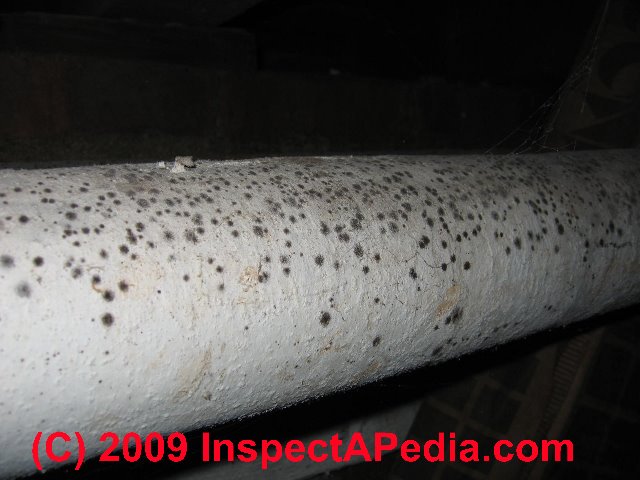What is the difference between Mold and Mildew? Mold can become fuzzy; mildew is usually a flat growth, as in a shower. Just as beauty is in the eye of the beholder, some people will describe the visible evidence as mold or mildew. Both mold and mildew are fungi that grow in wetness. Both produce spores to propagate themselves.
Information Resources
“Mildew refers to certain kinds of mold or fungus. The term mildew is often used generically to refer to mold growth, usually with a flat growth habit.[]Molds include all species of microscopic fungi that grow in the form of multicellular filaments, called hyphae. Molds can thrive on any organic matter, including clothing, leather, paper, and the ceilings, walls and floors of homes with moisture management problems. Mildew often lives on shower walls, windowsills, and other places where moisture levels are high. There are many species of molds. In unaired places, such as basements, they can produce a strong musty odor.[]Visit the Mold Website for more information.”
United States Envrionmental Protection Agency | What is the difference between Mold and Mildew?
US EPA | Mold Remediation in Schools and Commercial Buildings Guide: Chapter 1
Educational Videos
CNBC Television | Toxic mold devastates family, causes myriad health problems
AmenClinics | Neuropsychiatric Clinical Presentation of Mold Illness
Vibrant Wellness | Dr. Jill Carnahan Mold and Mycotoxins
CDC | Basic Facts about Mold and Dampness
CDC | Mycotic Fungal Diseases
EPA | Mold Remediation in Schools and Commercial Buildings Guide: Appendix B: Introduction to Molds
RUPA Health | The Hidden Health Dangers Of Mycotoxins In Mold
Personnel Health Concerns
“Mold can cause many health effects. For some people, mold can cause a stuffy nose, sore throat, coughing or wheezing, burning eyes, or skin rash. People with asthma or who are allergic to mold may have severe reactions. Immune-compromised people and people with chronic lung disease may get infections in their lungs from mold.”
Centers for Disease Control and Prevention (CDC): Molds
Energy Efficiency Concerns
The mold on piping insulation indicates moisture accumulation within the insulating materials. Porous insulation readily becomes moldy when air comes in contact with refrigerated water piping (chilled water). As the moist air comes into contact with the cold piping surfaces, moisture condenses and soaks through the porous insulation, effectively minimizing the insulation’s capacity to minimize energy loss to the atmosphere.
Can anti-fungal sprays be applied to the surface of the insulation? Yes, but it would be a waste of time and money while doing nothing to protect occupants of the affected space. The sprays may offer a brief cosmetic but will not kill the mold growing inside the insulation and most certainly will not improve energy efficiency.
In two-pipe hydronic systems, the mechanical equipment pumps cooling water in warm weather and heating water in cold weather. The mold problem will only manifest in warm weather.
Remediation of moldy pipe insulation started with common sense safety. The moldy insulation must not be removed while the space is occupied. Schedule remediation with the building occupants.
The technician(s) should protect their respiratory system with N95 masks widely available from big-box stores like Home Depot, online, and Amazon.com. The workspace should be well-ventilated.
Select a non-porous insulation product and follow the manufacturer’s instructions. Non-porous insulation is commonly described as closed-cell. Using open-cell insulation is an invitation to premature failure.
Seal all insulation joints to prevent moist air from getting between the pipe and the inside surface of the insulation. Failure to seal the insulation can and will lead to condensation dripping out through the unsealed joints.
John White
Rockwall, Texas


